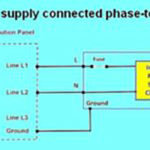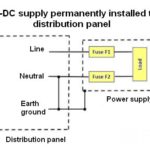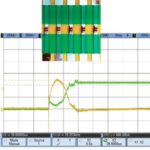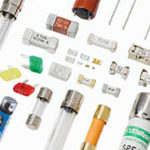Circuit protection is a wise choice for anything subject to surges such as over-current, short circuits, dirty power, and overloads. Most of us have already seen a fuse since they can be found in cars, appliances, and thermostats. But did you know that there are current-limiting fuses in your smartphone, smartwatch, ebook readers, laptop, and anything with a rechargeable battery pack? Electronics devices that work off of DC power are subject to Electrostatic Discharge (ESD). ESD is that snappy charge that you get when you walk across a carpet in your socks on a winter day; low humidity and movement builds up static electricity that can discharge a high-voltage spark into a device when you plug in a USB cable (or any other I/O cable, for that matter). Fuses are placed in series between an external port and the devices it protects.
Some very small fuses go into these devices to protect against a current surge. Some have to be manually replaced when they blow; these are one-time fuses. A Positive Temperature Coefficient (PTC) fuse protects against overcurrent and then automatically resets itself since it’s not possible to replace a fuse or the battery inside many small devices anymore.
PTC fuses don’t blow into an open circuit like one-time fuses. PTCs suddenly turn into high-impedance (high resistance) devices, blocking current flow, when they sense a specified level of heat. For example, if a motor (a load) starts to draw too much current (an overload), it can start to overheat in-circuit traces or wires. A PTC fuse will block any surge in current to a source or load. PTCs are not meant for high voltage DC uses like a Tesla car’s power train. But they are often used in consumer electronics, telecommunications, appliances, and many unreachable places in aerospace or avionics.
How does a PTC fuse work?
Most PTCs are thermistors; a passive component made of a material that has a positive temperature coefficient. Too much current flowing through a device can cause it to heat up, which like the elements in a toaster, raises the PTC’s temperature. It is the rise in temperature that causes the PTC to increase resistance exponentially and thus limit current flow through the PTC. The internal structure of a polymer PTC is made of conductive and non-conductive polymer composite particles. As the temperature increases, the crystalline structure changes, creating a very high resistance to current flow.

Under normal operation, a PTC only adds a tiny amount of resistance in series with a circuit; on the order of 1mΩ (Eaton) to 250Ω. An over-current condition will rapidly trip a PTC into a high-resistance state.
Depending on the PTC, after the PTC cools down — which can take a few seconds to several minutes — the PTC returns to its low resistance state.

Many PTC fuses are available by several manufacturers using proprietary materials under different trade names. As of this writing, Eaton makes PolyTron™ PTC resettable fuses, Bourns® makes Multifuse PTC fuses, and Littelfuse makes Poly-fuse Polymeric PTCs and PolySwitch® (formerly a TE Connectivity trade name) PTCs. Another term often used is Polymeric PTC fuse or Polymer PPTC fuse. (There’s a difference between PTCs used as fuses versus PTCs used in heaters, however, here we discuss only PTCs as fuses.)
Selecting the right fuse
When you start to look for a fuse for your design, you’ll need to know most of the following information to narrow down the parameters in your selection:
- Ease of service (e.g., resettable or one-time fuse?)
- AC (RMS) or DC voltage rating
- Current under full load
- The maximum available current if there’s ever a short circuit
- Form factor, mounting, and space requirements (e.g., radial, SMD, through-hole mounting, etc.)
- Ambient temperatures under all operating circumstances (e.g., if located in a server room, will the server room AC never break down?)
- Type of mounting required
- Expected changes in current loads (e.g., inrush current when starting a motor)
- Any additional requirements (e.g., electrical code, UL, AEC-Q200 automotive, or other safety requirements for your application)
Advice for selecting any component
Purchase only authentic or genuine components from an authorized distributor to prevent using counterfeit parts that don’t live up to specifications. Look on the vendor’s website for whether that vendor is authorized (e.g., vetted, certified) by the manufacturer to sell that manufacturer’s parts. (There is a “chain of custody” that’s followed with an authorized seller or distributor.) Legitimate distributors can be found on a site operated by the Electronic Components Industry Association (ECIA) at www.eciaauthorized.com.







Leave a Reply